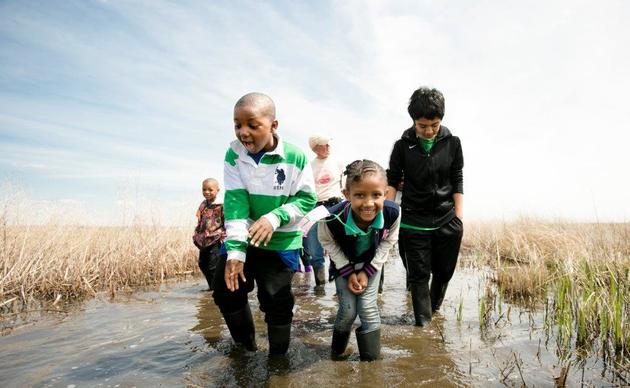The Restoration of Bartel Grassland: How Have We Done?
In 2001 expert birder Marianne Hahn brought the Bird Conservation Network (BCN) a plan drafted by Thorn Creek Audubon to save this remarkable grassland that was host to hundreds of grassland birds.
A coalition including the Forest Preserve District, Audubon (Chicago Region and Thorn Creek), BCN, Openlands, and citizen volunteers set out to transform this hayfield into a native prairie-wetland complex that would continue to provide habitat for hundreds of rare birds year after year.
The partners have disabled drain tiles, controlled invasive species, seeded and plugged with native species, conducted controlled burns, and monitored birds, plants, and other species.
Grassland Birds: Continuing to Thrive
At Bartel, the goal is to maintain the high numbers of grassland birds that inhabited the site prior to the restoration, while also establishing a high quality native grassland.
Bird numbers have remained high at Bartel since the project’s inception. The ups and downs are similar to regionwide trends, telling us that Bartel’s year-to-year fluctuations are due to regional factors such as weather or winter conditions.
The average number of grassland birds at Bartel was 10 birds per point count, which is higher than the regionwide average and tells us that Bartel is providing important habitat for grassland birds.
Native Plants: Slowly but Surely Taking Root
The quality of the native vegetation at Bartel is gradually improving, with a small increase in both the number of native plant species and the Floristic Quality Index, which measures the quality of plant species for ecosystem health.
Other restoration projects that have gone from old field to native prairie have taken decades to reach high quality status. With patience and continued hard work, we hope to see ever-improving floristic quality at Bartel.
Aggressive Invasives: On the Run
Most of the invasive species at Bartel are under control, especially reed canary grass, on which we have maintained a laser focus. Tall goldenrod is the only invasive species that has increased at Bartel, and its 2012 control strategy has been revised as a result of these monitoring results. This “adaptive management” is exactly why we do the monitoring – to provide feedback to stewards and land managers about what is working well and what needs rethinking.
Seeding and Burning are Working

The more often we have spread seeds and burned an area, the better its floristic quality.
The Power of Adaptive Management
The Bartel project has shown us the power of strategic monitoring to improve wildlife habitat and the quality of our natural areas. We’ll continue to monitor Bartel’s birds and plants and look forward to sharing the results with you again in a few years.
Bartel’s partners are the Forest Preserve District of Cook County, Audubon Chicago Region and Thorn Creek Audubon, the Bird Conservation Network, and the Bartel Volunteers, with help from Openlands and the Army Corps of Engineers over time.
Bird monitors were Marianne Hahn, Marlys Oosting, Penny Kneisler, Dick Riner, and Robert Sliwinski. Plant monitors and data recorders were Pat Brownlow, John Denk, Stephanie Frischie, Karen Glennemeier, David Johannesen, Alan Kawaters, Anne Kawaters, Mary Anne McLean, Ron Milnarik, Keith Nowakowski, and Paul Strand.
You can download the full report below.
Ways You Can Help
Join A Chapter
Audubon chapters create a culture of conservation in local communities through education and advocacy, focusing on the conservation of birds and conservation of important habitats.
Donate to Audubon
Help secure the future for birds at risk from climate change, habitat loss and other threats. Your support will power our science, education, advocacy and on-the-ground conservation efforts.




